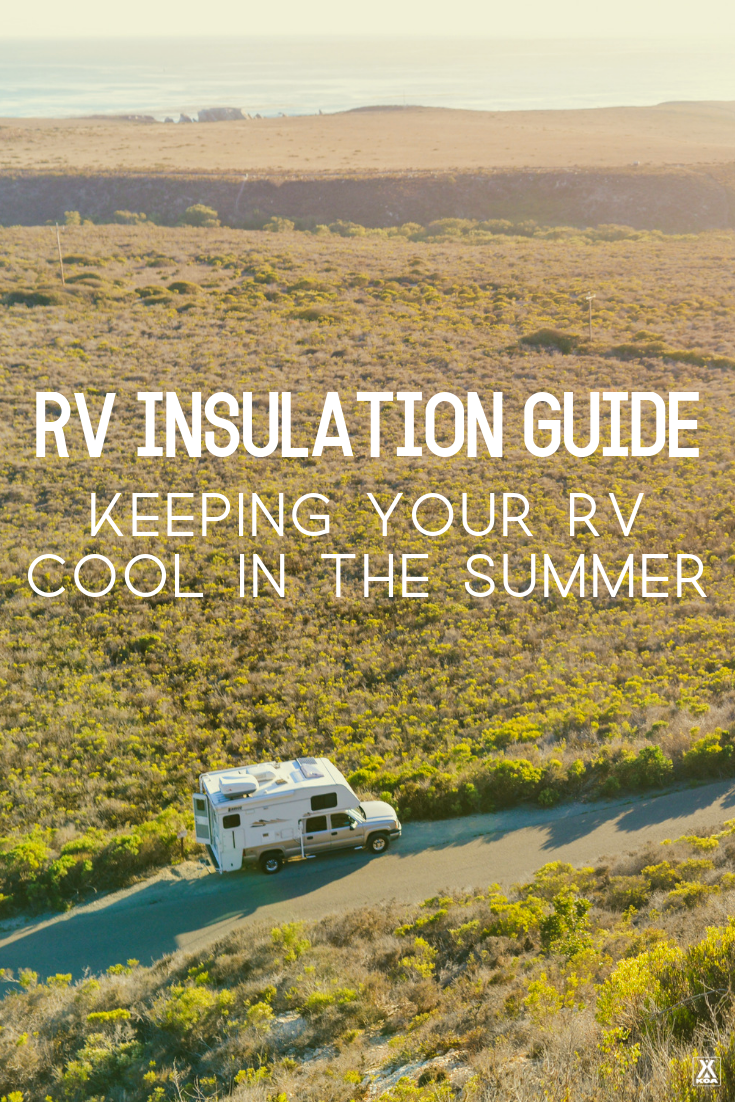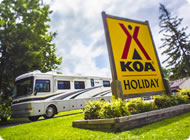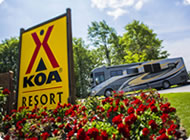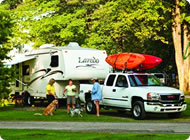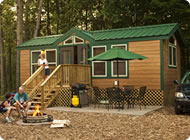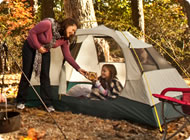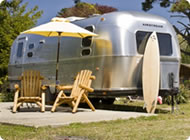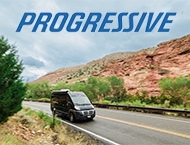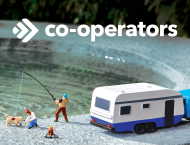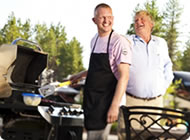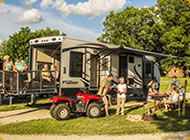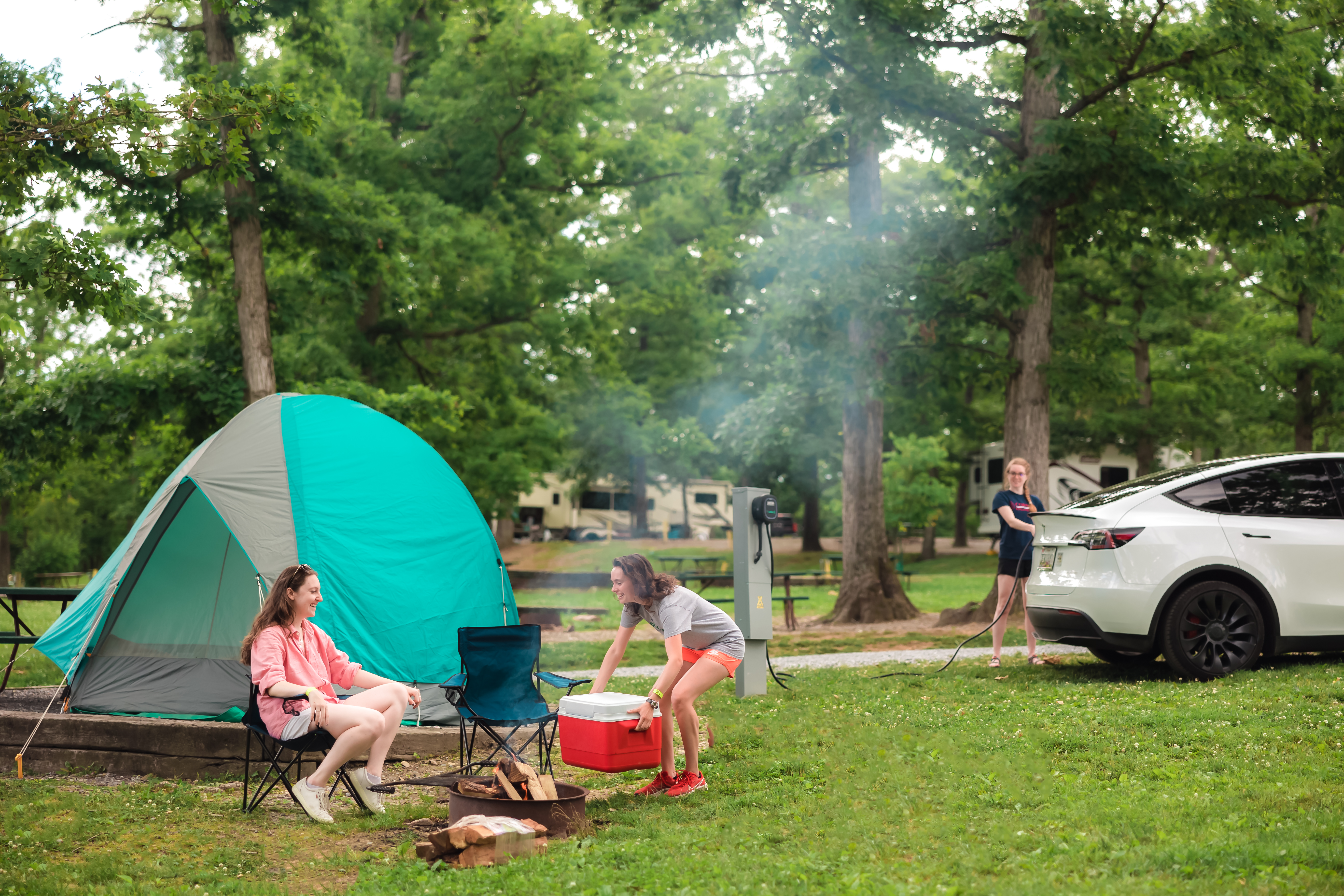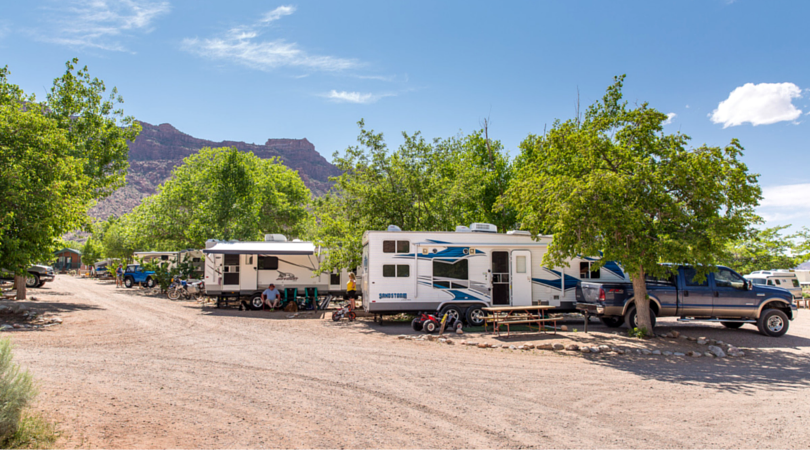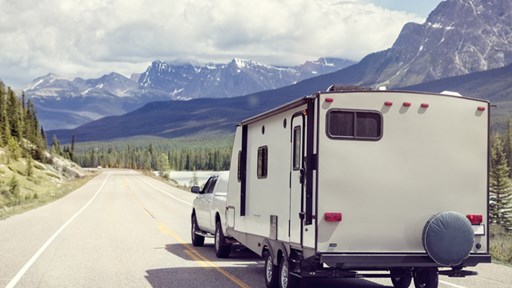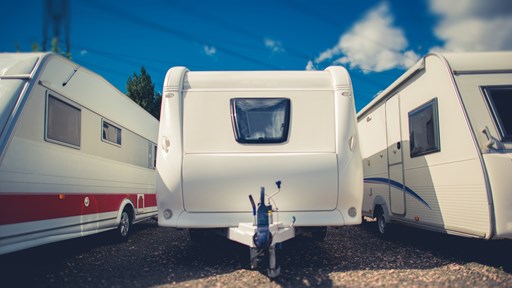Summer is the perfect season to travel to sunny destinations in your RV. You can spend long days tanning on the beach, hiking through the desert or enjoying the peace and quiet of the woods. However, camping in the summer in your RV can quickly become a hot and sticky mess without the right tricks for keeping your RV cool in extreme heat. In this piece, we will share some expert tips for how to insulate your RV for summer and keep your RV cool and comfortable.
Different Options for Insulating Your RV This Summer
RV insulation is your number one tool for keeping your RV cool in summer. Effective RV insulation will trap cold air inside your RV and keep hot air out.
Depending on the style of your camper and how much insulation you need, you have several different options for insulating your camper for summer. RV insulation ranges from simple skirting and curtains to wall panel insulation installed in your rig. The best insulated RVs will combine a few of these RV insulation ideas to effectively beat the heat this summer.
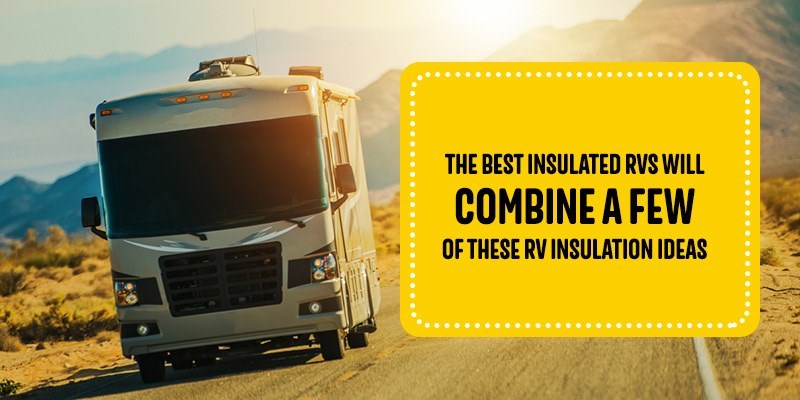
1. Insulate the Windows and Doors
RV windows and doors can let in a lot of hot air if they are not sealed properly. Doors and windows in older campers can be particularly drafty if you have never replaced or repaired the weather stripping or caulking. Here are a few options for improving your RV door and window insulation for summer:
- Add new caulking: The caulking around your RV doors and windows can crack or peel over time, letting outside air enter your camper. By resealing your RV windows with a new layer of caulk, you can block out that hot air. New window caulking should be applied every few years or whenever you notice a draft in your camper.
- Replace the weather stripping: Your RV’s weather stripping can also wear out over time and lose its insulation properties. Inspect your RV weather stripping for holes, cracks or gaps, and replace any damaged weather stripping.
- Add reflective insulation: Reflective insulation helps cool your camper by blocking the sun’s rays. Place sheets of reflective insulation in your RV windows and secure them with tape.
- Use a door snake: A tried and true method for protecting against drafts, a door snake is simply a tube of fabric or foam that sits across the bottom of your door to prevent drafts. You can make your own door snake easily using a piece of fabric filled with dry rice, beans or lentils.
- Upgrade your doors and windows: Many RVs come with single pane windows that are not very effective at keeping hot air out and cold air in. Consider upgrading your RV windows and doors to energy-efficient models that are designed to provide better insulation.
- Plastic insulating film: If your RV windows are still letting in a draft, try installing plastic insulating film. This adhesive film can be placed over the windows to provide an air-tight seal.
These tips for RV window insulation for summer can help keep that precious cold air inside your camper even on the most sweltering days.
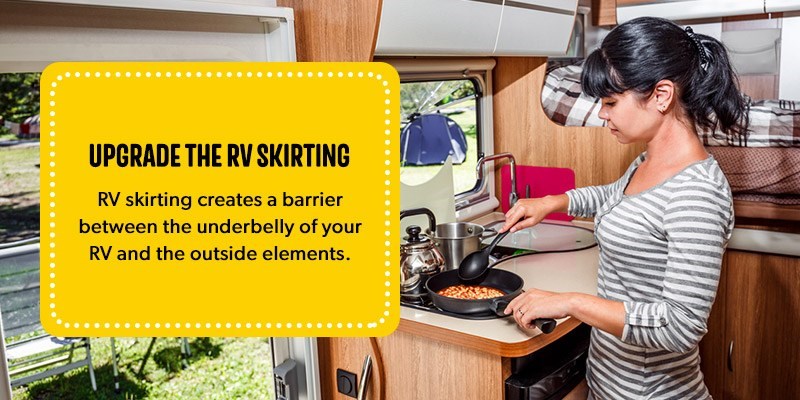
2. Upgrade the RV Skirting
RV skirting is an often underrated way to insulate your RV for summer, but it can work wonders to keep the inside of your camper cool on the most sweltering days. RV skirting creates a barrier between the underbelly of your RV and the outside elements. In the summer, this means blocking the heat that radiates off the pavement and warms your RV from underneath. Skirting helps keep the interior temperature of your RV more stable and controlled.
You can purchase an RV skirt that is customized to fit your camper, or you can build a makeshift RV skirt using plywood or foamboard. Any material that prevents hot air from drafting underneath your camper will provide effective RV insulation for your trailer’s underbelly.
3. Seal All Compartments
If your RV has exterior storage compartments, hot air can leak into your camper through the hinges and cracks. Just like you sealed your RV windows and doors, you can do the same for your RV storage compartments. Inspect and re-apply caulking around storage compartments and seal them with new weather stripping.
4. Block the Vents
If you can still feel warm drafts in your camper, outside air may be entering through the vents. Use vent cushions and covers to block the vents and skylight. You can also insulate your RV vents using foam board. Covering the vents is an effective RV insulation idea for days when your air conditioning is running. On cooler days when your RV vents are open, remember to remove the vent cushions to let the breeze blow in.
5. Insulate the Walls
The insulation that comes standard with your RV is often not enough to keep you cool when temperatures skyrocket in the summer. Luckily, you can upgrade your RV wall insulation fairly easily by installing foam panels, spray foam or fiberglass insulation inside your RV. The following section covers the different types of RV wall insulation you can install to keep your RV cool in the summer.
Types of RV Insulation
RV insulation is available in several different types that each provides its own benefits and challenges. The three most common types of RV insulation are fiberglass insulation, rigid foam insulation and spray foam insulation.
1. Fiberglass RV Insulation
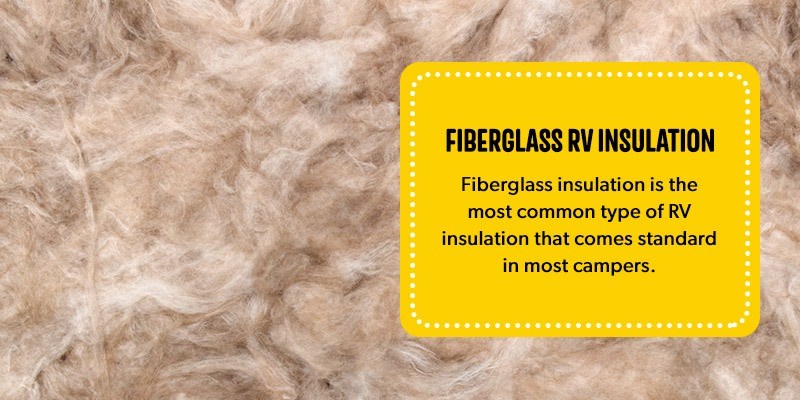
Fiberglass insulation is the most common type of RV insulation that comes standard in most campers. RV fiberglass insulation has a high R-value, which is a rating of the thermal resistance of the insulation. A higher R-value means greater protection from sweltering temperatures in the summer and frigid air in the winter. This means fiberglass insulation is very effective at maintaining a consistent temperature inside your RV. Fiberglass is also an affordable option that is easy to install and replace.
The benefits of choosing fiberglass RV insulation to keep your RV cool in summer include:
- High R-value
- Easy installation
- Low cost
However, fiberglass RV insulation is not without its drawbacks. Fiberglass insulation wears out more quickly than other types of RV insulation and is also very susceptible to damage from moisture. When moisture gets inside fiberglass insulation, the insulation expands. Over time, this can cause the R-value of the insulation to decrease. To remain effective, fiberglass insulation must be replaced relatively frequently.
Moisture inside your RV insulation can also pose more serious concerns, such as mold. If mold grows inside your insulation, it can give your RV a musty smell and may even cause negative health impacts, such as a stuffy nose, coughing and eye irritation. If you travel between warm and cold climates frequently, moisture is more likely to collect in your RV insulation and cause mold to grow more quickly.
So, the primary drawbacks of fiberglass insulation are:
- Wears out quickly
- Low moisture resistance
Fiberglass RV insulation is best-suited for RVers who tend to stay in a single climate or are willing to replace their insulation every few years. If your summer travel plans include an RV trip to the tropics, you may want to choose a different insulation type.
2. Rigid Foam RV Insulation
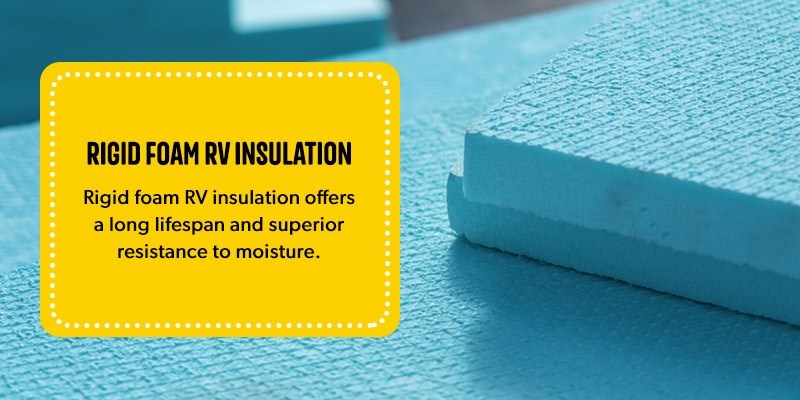
Rigid foam RV insulation offers a long lifespan and superior resistance to moisture. Because of its solid construction, rigid foam insulation does not collect moisture or pose the risk of mold growth. This makes foam insulation well-suited for RVers who enjoy exploring different climates throughout the year. Foam insulation panels are also available in varying thicknesses with different R-values, making them versatile for most climates. Rigid foam panels can be cut to the correct size for your RV to ensure a tight seal and effective insulation.
The main advantages of choosing rigid foam insulation for your RV include:
- Long lifespan
- High moisture resistance
- Various R-values available
Although rigid foam insulation lasts a long time once it is installed, putting it in place the first time can be challenging. Foam insulation panels come in standard sizes that you must then cut to fit the exact dimensions of your RV. You then insert these sheets into the walls of your camper and fasten them securely using caulk or industrial tape. If you are not handy with tools, installing rigid foam insulation by yourself might be difficult.
The primary drawbacks of rigid foam RV insulation are:
- Challenging installation
- Higher cost
RVers who are willing to invest the time, money and energy to install rigid foam insulation can benefit from long-term use and reliable insulation for hot and humid summer days.
3. Spray Foam RV Insulation
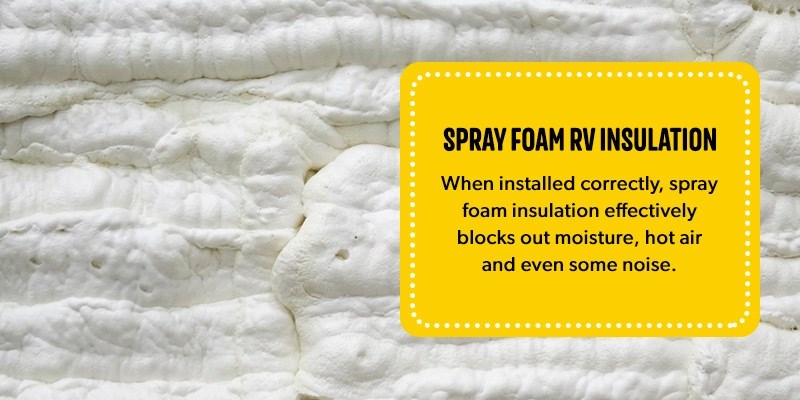
Another popular option for foam RV insulation is spray foam. This type of insulation is applied directly into your RV walls using a spray canister. When applied evenly and thoroughly, spray foam RV insulation provides an extremely effective seal against unwanted drafts. Spray foam insulation is entirely impervious to moisture, making it an excellent option for RVers who love summer trips to the beach. Spray foam insulation is also affordable and lightweight, which can help improve your gas mileage on long trips.
Here are a few reasons to choose spray foam insulation for your RV:
- Superior seal
- Excellent moisture resistance
- Low cost
While installing spray foam insulation is fairly straightforward, it may be difficult if you are unfamiliar with the process. The effectiveness of spray foam insulation is also partially dependent on how well you apply it in your RV walls. Another downfall to spray foam insulation is that it has a slightly lower R-value than rigid foam and fiberglass installation.
These are the main disadvantages of choosing RV spray foam insulation:
- Lower R-value
- Somewhat challenging installation
When installed correctly, spray foam insulation effectively blocks out moisture, hot air and even some noise. The tight bond of spray foam is perfect for keeping your RV cool in the summer, but may not be the best choice for extremely hot or extremely cold climates.
The right type of RV insulation depends on your travel plans and preferences. Does a high R-value or superior moisture resistance matter more to you? Do you plan to travel to many different climates this summer or stick around the same region? Are you a DIY master or would you prefer a simpler installation? By considering these questions, you can choose the perfect RV insulation type for you.
12 Tips for Keeping Your RV Cool This Summer
In addition to choosing the right insulation method to trap in that precious cold air, there are several other tricks for keeping your RV cool in extreme heat. Here are 12 tips for how to keep your RV cool this summer:
1. Optimize Your RV Awning
RV awnings are designed to provide extra shade and comfort on sunny days. Set up lounge chairs and other outdoor furniture under your awning to relax in the cool shade. For extra cooling, attach portable fans or misters beneath your awning to provide a spray of cooling water and a gentle breeze to enjoy while you lounge.
You can even take this one step further by transforming your RV awning into a complete shade room. Attach sheets or reflective screens to your awning to create an enclosed area underneath. Shade room kits are available complete with poles and other fasteners that make optimizing the shade from your awning a breeze.
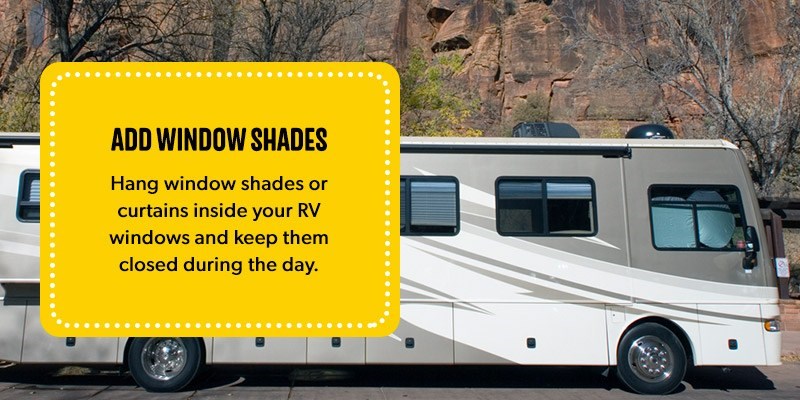
2. Add Window Shades
Sunlight streaming into your RV will quickly cause the interior temperatures to skyrocket. The more sunlight you can keep out of your RV, the cooler it will be inside. Hang window shades or curtains inside your RV windows and keep them closed during the day. You can also attach window awnings outside your RV windows for extra protection.
3. Park in the Shade
Try to park in the shade whenever you can. Parking in the shade is a simple yet effective way to keep your RV cool in the summer without spending any extra money.
If you are camping in the desert or an area without shade, you can install a small shade canopy over your RV roof for a little extra cooling power.
4. Park Facing North
Determine where the sun sets and rises and park with the front of your RV facing north. In the morning, your RV awning will block the sun from hitting your RV and shining into the windows. During the hottest part of the day in the afternoon and early evening, your RV will cast a cool shadow over your seating area for even more protection from the heat.
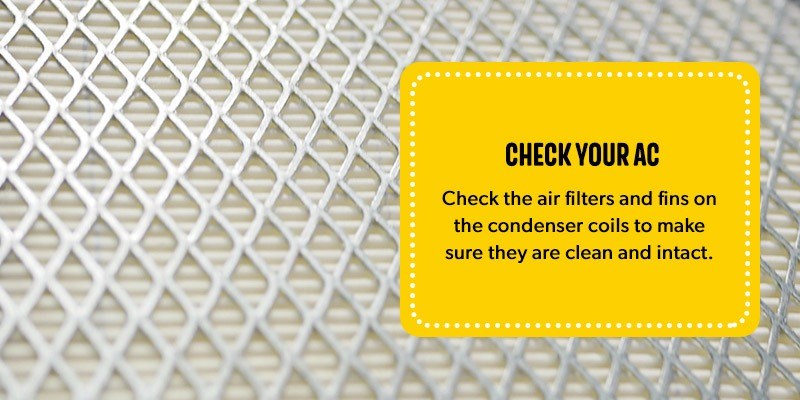
5. Check Your AC
If you plan to use your RV air conditioner to stay cool during your summer camping trip, it’s a good idea to give it a quick inspection before heading out. Check the air filters and fins on the condenser coils to make sure they are clean and intact. Turn your AC on and test that it is functioning properly before you hit the road.
6. Use Portable Fans
While the air conditioning in your RV offers the most effective cooling, running your air conditioner all day can quickly drain your RV battery. Try using small portable fans instead or in addition to the AC with it set on low. Fans will help keep cold air circulating in your RV rather than settling on the ground. By installing fans in strategic locations, you can keep your entire cabin cool and comfortable.
For very hot days, you can also purchase a portable AC unit. A battery-powered unit can help save your RV battery while still effectively cooling your camper interior.
7. Stay Hydrated
In addition to keeping your RV cool, keep yourself cool too! Drinking lots of water during the day prevents your body from losing moisture and essential electrolytes from sweating. Your body also needs to be properly hydrated to cool you down in hot weather. Stay hydrated and avoid exerting yourself too much during the hottest parts of the day. While you are outside, stay in the shade as much as possible and keep drinking water even if you are not thirsty.
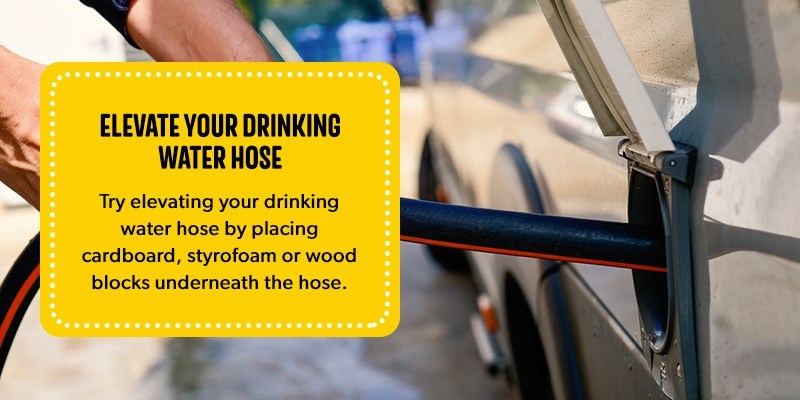
8. Elevate Your Drinking Water Hose
This unusual tip can do wonders to keep you cool in extremely scorching temperatures. On the hottest days, all you want is a refreshing glass of cold water. However, if you park on asphalt, your RV tap will likely run warm because of the heat radiating off of the road. It may also take a long time to cool down, wasting fresh water and energy.
Try elevating your drinking water hose by placing cardboard, styrofoam or wood blocks underneath the hose. You can even insulate your RV hoses using swimming noodles or foam wrap.
9. Cook Outside During the Day
Cooking inside your RV during the day will quickly raise the internal temperature and strain your RV air conditioner. Instead, plan ahead to eat cold meals during the day, like sandwiches, salads, cold pasta dishes or fruit and vegetables. Refreshing and light meals will also keep your body naturally cooler as it will not have to work as hard to digest your meal.
If you want to enjoy a hot meal for lunch, try cooking over your campsite’s fire pit or using a portable camp stove. When you are done cooking outside, you will get to enjoy a smoky and delicious campfire meal in the comfort of a cold RV.
10. Keep the Door Closed
As much as possible, avoid going in and out of your RV frequently. Keeping the door closed will prevent cold air from escaping and hot air from getting in. Temperature fluctuations from opening and closing the door also force your RV air conditioning to work harder to maintain the temperature inside your rig. When heading outside for an activity — like cooking your lunch on the grill — gather all of your equipment or tools first to avoid having to pop back inside for something you forgot.
11. Try Some Cooling Activities
Instead of sitting inside your RV and sweating during the day, head outside to try some cooling summer activities. Here are a few options of fun outdoor activities to keep you cool on hot days:
- Swimming: Some campgrounds offer swimming pools that are the perfect place to spend a sunny afternoon. If your campground does not have a pool, look for lakes, ponds or beaches in the area where you can take a dip.
- Boating or kayaking: Check if there are boat rentals in the area and then head out on the water to fish, spot wildlife or simply relax and enjoy the cool breeze off of the waves. Some campgrounds may even offer boat rentals so you don’t have to venture far from your campsite.
- Tubing: There’s nothing quite as relaxing on a hot summer day as leisurely drifting down a river. Search for inner tube rentals in your area or pack some in your RV for a chill day on the water.
- Water parks: If you camp near a popular beach destination, you may even be able to find a waterpark nearby for some refreshing summer fun.
With a little creativity, you can discover plenty of fun ways to stay cool and have fun during your RV summer vacation.
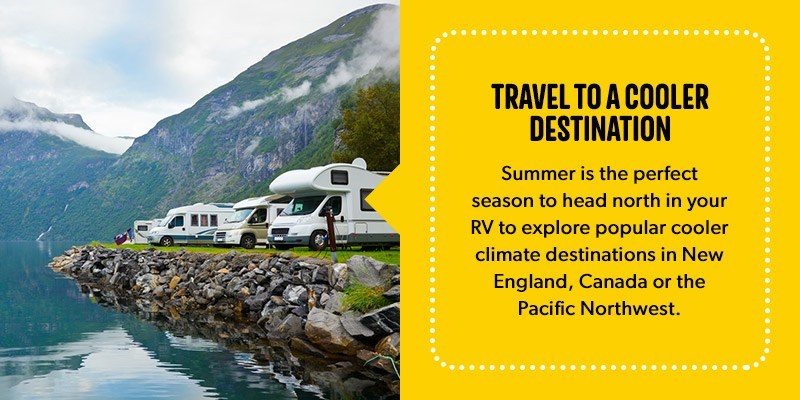
12. Travel to a Cooler Destination
Another option for beating the heat in your RV this summer is avoiding the heat altogether! Summer is the perfect season to head north in your RV to explore popular cooler climate destinations in New England, Canada or the Pacific Northwest. You’ll enjoy a welcome relief from the sweltering heat, as well as the opportunity to experience a new vacation spot.
Book Your Summer RV Camping Trip at a KOA Campground Today
With these tips for keeping your RV cool in extreme heat, you can enjoy a relaxing summer camping vacation no matter where your travels take you. If you’re ready to start planning your next RV adventure, consider choosing a Kampgrounds of America campground for your home base. As the largest network of private campgrounds in the world, there is always a KOA convenient to your destination. You can find KOA campgrounds near national parks, beautiful beaches on both coasts and some of the most popular attractions in the U.S.
When you camp at a KOA campground, you’ll always find level RV Sites with clean restrooms and laundry facilities just around the corner. KOA offers Back-In and Pull-Thru RV Sites with full sewer hookups and 30 or 50-amp service to meet your needs. For an even more comfortable RVing experience, book an RV Site with a KOA Patio™. Complete with two furnished seating areas, a fire ring or fire pit and more than 250 square feet of private patio space, these roomy campsites are the perfect place to relax with the whole family.
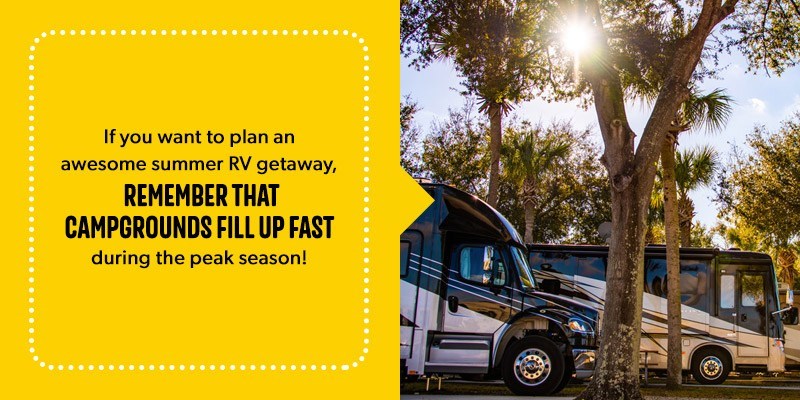
As summer rolls around, RVers across the country are getting their rigs ready for the season. If you want to plan an awesome summer RV getaway, remember that campgrounds fill up fast during the peak season! Book your campsite early to score that perfect shaded RV Site at your dream camping destination. Find a KOA campground today to get started.
